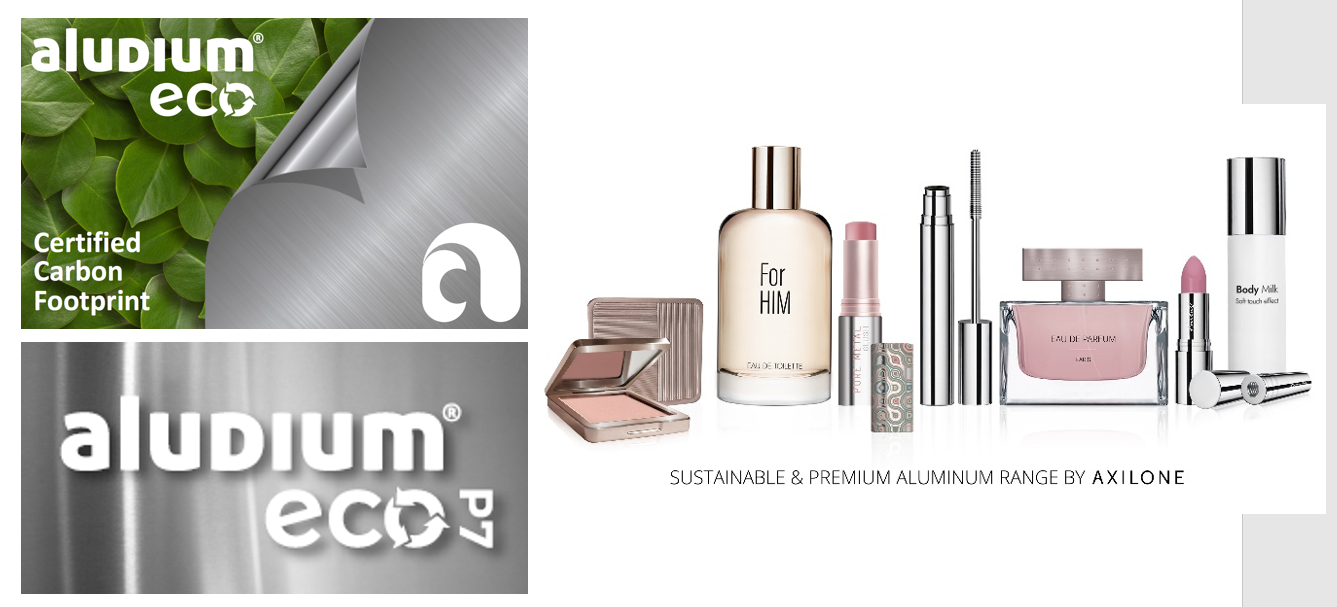

Axilone, a leading global luxury cosmetic packaging manufacturer for skincare, fragrance, and colour cosmetics, in collaboration with Aludium, one of Europe's leading aluminium suppliers, have teamed up to introduce an aluminium to the market that reduces the carbon footprint by over 24 per cent compared to the average carbon footprint for primary aluminium1 sold in Europe2. When compared to primary aluminium produced in China, it results in an average carbon footprint reduction of 76 per cent3.

Axilone will utilise Aludium's leading, certified, and independently verified low-carbon aluminium for its cosmetic packaging components.
ECO P7 Aluminium generates less than 7 tonnes of CO2 equivalent per tonne of aluminium, from raw material extraction through to delivery 4. This reduction is achieved through a combination of a controlled production process and the careful selection of low-carbon primary aluminium.
The GHG emissions produced by this enhanced generation of aluminium are verified by a third party and certified in accordance with ISO-14067-1:2018 and the Greenhouse Gas Protocol Standards. This certification process has been rigorously executed to provide full transparency of the aluminium carbon footprint.
"We see it as our responsibility to identify more environmentally friendly aluminium and continuously work to optimise the life cycle of our packaging. This is why we are committed to introducing more sustainable materials to the market, with lower CO2 emissions," explains Martin Haye, Strategic & Development Director of Axilone Group.
"As a European leader in the beauty packaging sector, we must offer aluminium alloys that are both high-quality and sustainable, with a reduced carbon footprint. Partnering with Aludium's ECO P7 aluminium allows us to meet this growing market demand," details David Gregorio, Director of Axilone Metal.
Silvia Ruiz, International Account Manager at Aludium, says, "As a pioneer in offering certified low-carbon aluminium alloys, Aludium is thrilled to collaborate with Axilone to continue advancing sustainability in packaging solutions, especially in a sector as demanding as luxury beauty."
Michael Brandner, Specialties Sales Director at Aludium, adds, "Thanks to substantial investments in Aludium's assets, technology, and processes, we are helping customers and end users meet their carbon reduction goals."
Note:
1 Primary aluminium is produced from alumina, typically by electrolysis, and with an aluminium content of 99,7 per cent. Primary aluminium excludes alloying additives, and recycled aluminium possibly includes a small amount of runaround scrap. (Source: Global Advisory Group GAG – Guidance “Terms and Definitions” – 2011-01 and The International Aluminium Institute (IAI)).
2 Rolled product produced using primary aluminium used in Europe: 9.2 tonnes CO2e/tonnes semi-finished rolled alu (source: 2018 EA Environmental profile report). (<> 24 % reduction in tons CO2e)
3 Rolled product produced using China primary aluminium: 28.6 tonnes CO2e/tonnes semi-finished rolled alu, (source: 2018 EA Environmental profile report and The International Aluminium Institute) (<> 76 % reduction in tons CO2e)
4 The new technology, also known as Aludium Eco Brand P7, is cradle-to-gate, including Scope 1, Scope 2, and Scope 3 emissions, meaning that less than 7 tonnes of CO2 is produced per tonne of semi-finished aluminium.
Responses








